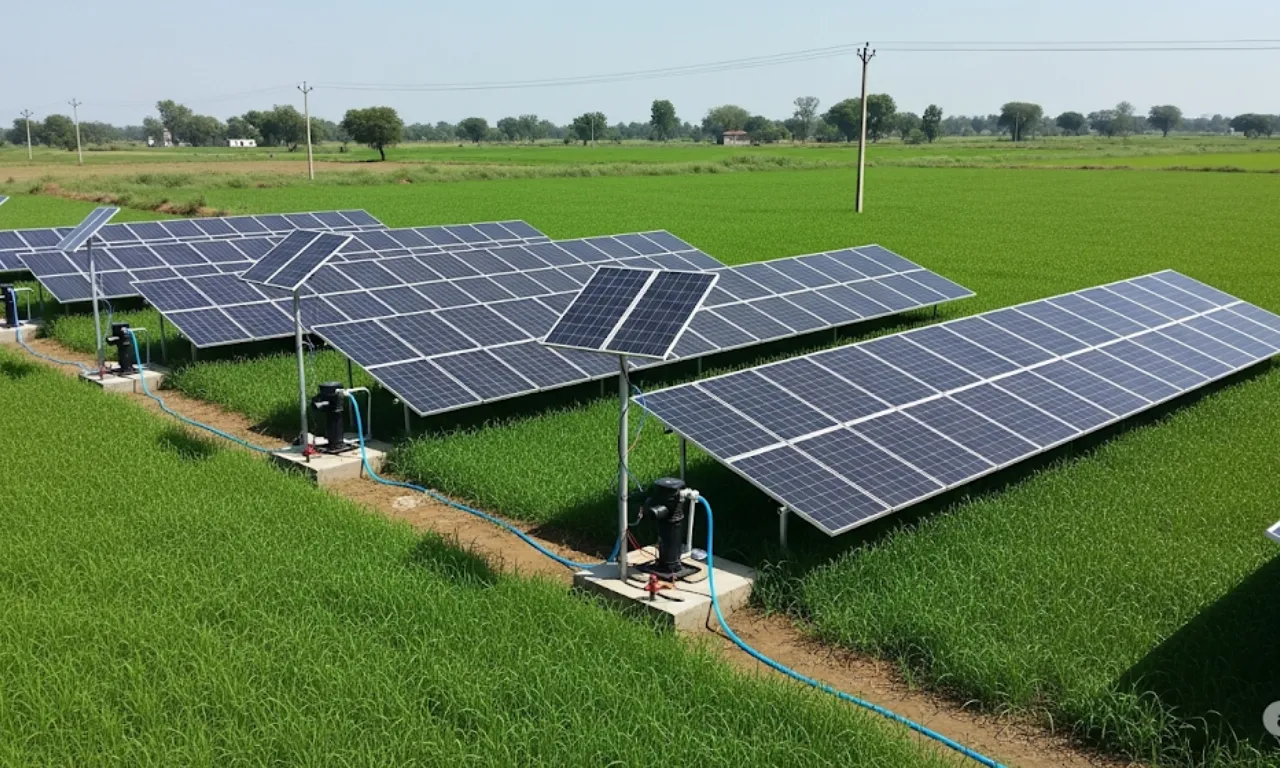- Karnataka has started a 200 MW solar project under PM-KUSUM Component C, with another 545 MW planned across 93 locations.
- The projects help farmers by providing daytime power supply for agricultural pump sets, regularizing unauthorized pumps, and distributing solar pumps to remote farmers under the Kusum-B scheme.
- The government offers land free for solar projects where available; private developers pay INR 25,000 per acre, with the funds used for local community development like schools and anganwadis.
Karnataka is quickly developing solar power under the Pradhan Mantri Kisan Urja Suraksha evam Utthaan Mahabhiyan (PM-KUSUM) scheme, especially its Component C. This growth is aimed at providing steady solar energy for agricultural pump sets, directly helping farmers by making daytime electricity dependable. With 200 MW already started and 545 MW more in progress, the state is making a strong effort to improve renewable energy for agriculture.
Karnataka’s Solar Power Growth under PM-KUSUM Component C
Karnataka has made a big move by starting 200 MW of solar power capacity under PM-KUSUM Component C. Another 545 MW is planned to be installed across 93 locations. This is part of the state’s goal to generate 2,400 MW of power by solarising feeders dedicated to powering agricultural pump sets during the day. Energy Minister K.J. George highlighted the state’s commitment to strengthening power supply for farmers during a recent review meeting in Hassan district.
What PM-KUSUM Component C Means for Farmers
Farmers will benefit greatly as this solar power growth provides steady and dependable electricity for their agricultural pump sets, which are vital for irrigation. The PM-KUSUM scheme has addressed daytime power supply problems, reducing reliance on an erratic grid supply. Also, around 3 lakh unauthorized pump sets have been regularized, reaching more farmers. Those living more than 500 meters from power feeders are being given solar pumps under the Kusum-B scheme, making sustainable energy available to remote farming areas.
Also Read – Kusum-C Scheme to Boost Karnataka’s Farm Solar Capacity to 745 MW
Land Allocation and Financial Benefits for Solar Projects
Each megawatt of solar capacity under Component C needs about 4 acres of land. When government land is available, it is provided free for project setup. Private solar developers must pay INR 25,000 per acre, which is an important contribution towards local development. Money from private land allotments is used to improve government schools and anganwadis in the area. If private land is leased, project developers must pay landowners at least INR 25,000 per acre each year, directly benefiting landowners while promoting renewable energy growth.
Feeder Solarisation and Support for Farmers
Karnataka’s feeder solarisation plan targets 2,400 MW to ensure steady daytime power for pump sets. The state government is also working to regularize unauthorized pumps, improving organized electricity distribution. The Kusum-B scheme complements this by giving solar pumps to farmers far from power feeders, boosting farm productivity and reducing dependence on traditional power sources. Together, these efforts improve rural energy and farmer welfare.
| Details | Information |
|---|---|
| Current Commissioned Capacity | 200 MW |
| Upcoming Capacity | 545 MW across 93 locations |
| Total Feeder Solarisation Target | 2,400 MW |
| Land Requirement per MW | 4 acres |
| Cost for Private Developers per Acre | INR 25,000 (used for schools and anganwadis) |
| Annual Land Lease Payment to Private Owners | Minimum INR 25,000 per acre |
| Unauthorized Pump Sets Regularised | 3 lakh |
| Official PM-KUSUM Website | https://pmkusum.mnre.gov.in/#/landing |
If you’re a farmer or involved in the sector, keeping an eye on these updates can help you take advantage of solar power schemes under PM-KUSUM. For detailed guidelines and how to apply, visit the official PM-KUSUM website above or contact your local energy office.

